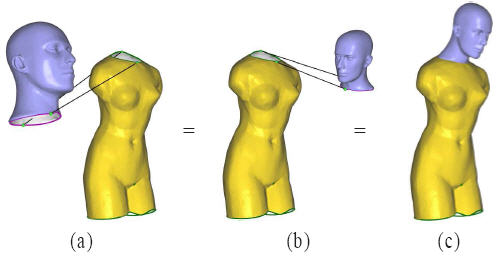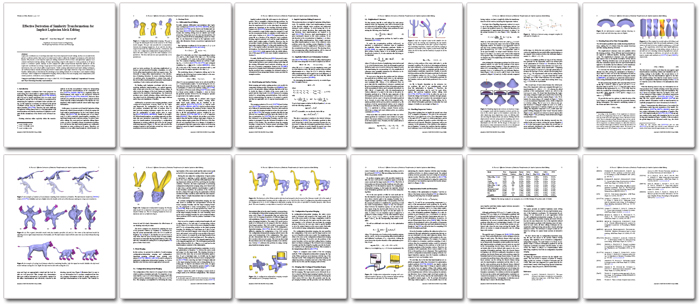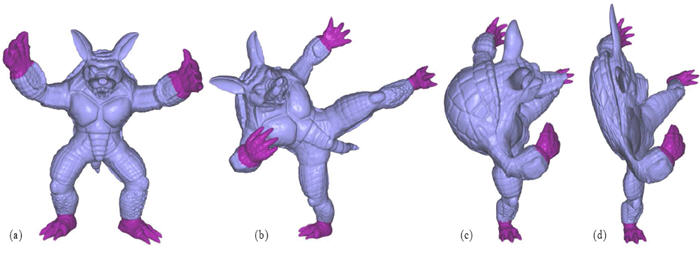
Configuration-independent merging. The goal is to merge the Mannequin head model (source) to the Venus model (target). The user only specifies the correspondence between the merging boundaries. In (a) and (b), the Mannequin head model has different positions, orientations and scales. Our configuration-independent merging method produces the same result (c), given the same boundary correspondence. The lines indicate two user-specified key correspondences.

PDF (805.3K)
An earlier version: Technical report, HKUST-CS05-01, Jan 2005

An example of rotation of local features resulting from
translation of handles. The deformation results by [Zayer et al. 2005]
(Left), [Lipman et al. 2004] (Middle) and ours (Right) when the handle
at the tail of the dinosaur undergoes a big-scale translation.

(a) The original Armadillo model with four handles
specified. (b) and (c): Two views of the deformed model by applying
several rigid transformations to the handles. (d) The deformation
result with the same view as (c) but without shearing removal.

The hind part of the Feline model is deformed and merged
to the fore part of the Dinosaur model. (b) is the result of
configuration-independent merging with the configuration in (a), and
(d) is the result of configuration-dependent merging with the
configuration in (c). In the configuration-dependent merging, the two
feet are specified as handles (purple), thus remain fixed. The same
boundary correspondence is used for both merging.
author = {Hongbo Fu and Oscar K.-C. Au and Chiew-Lan Tai},
title = {Effective derivation of similarity transformations for implicit {L}aplacian
mesh editing},
journal = {Computer Graphics Forum},
year = {2007},
volume = {26},
pages = {34--45},
number = {1},
}